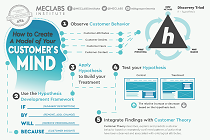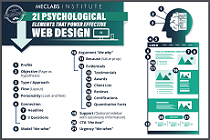
|
SUMMARY:
Marketing technology has exploded over the past decade, and that has fundamentally changed the role of marketing executives. Choosing tools and building a tech stack are now core responsibilities of the marketing department, not IT. How are marketers approaching that relatively new responsibility? Read on to see research from Target Marketing magazine that provides a look at how companies purchase technology today. (As seen in the MarketingSherpa Chart of the Week newsletter. Click to get a free subscription to the latest research and case studies from MarketingSherpa.) |
At Target Marketing, we surveyed our readers, and with over 300 responses, put together a report on “The Marketing Technology Buying Process.”
In that research, one of the key things we asked about was what steps in the marketing technology were most valuable to our respondents:
Thinking about how you evaluate and purchase marketing technology, for each of the methods below, please choose the value you get from that method.
Respondents rated those steps on a scale of 1 to 5, with 5 being “extremely valuable” and 1 being “not valuable at all.” (There was also a 0 option for “do not typically use.”)
Here are those steps, ranked by highest average score on down to the lowest, along with our takeaways.

Power to the marketers
One of the biggest takeaways from this chart is how the steps at the top really empower marketers to make their own decisions. The top five most valuable processes were product demos, self-driven online research, product “test drives” and extended demos, peer or community recommendations, and product testing reports/reviews/buyers guides.
Conversely, the lowest ranked steps involved asking for guidance from someone else: conducting interviews with tech experts, site visits (with vendors or product users), and recommendations from resellers and implementation partners. Assessment tools didn’t fare much better (although over 80% rated those in the 2 to 4 range, with a plurality rating them as 3, “very valuable”).
This was born out by some of the other questions in the study. For example, when asked who was involved in the marketing technology purchasing decisions, for most companies it was just marketing, the C-suite and IT (which, arguably, are the bare minimum departments required for a tech purchase). When we asked whether the purchase decision would be made by one individual, one departmental team, or multiple teams, most marketers leave it up to one individual or departmental team.
The purchase is really in the hands of the marketing department (to the extent that it’s fair to wonder if this is even too casual of an approach), which means the steps that empower them are the most valuable.
Hands-on experience is essential
Nothing helps a marketer decide to buy like a hands-on demo or, even better, an extended “test drive” or test installation. These processes earned the highest number of “extremely valuable” answers from the marketers we surveyed, and the number of marketers who reported they “do not typically use” these steps were both in the single digits.
This makes sense. Before you can decide if a technology is the right thing for your company to purchase, you want to be able to use it and see how it’s going to work in your workflow. As one respondent put it, “I cannot afford to buy a lemon. My job depends on it. I cannot afford to buy it twice or lose time that I need.”
Having said that, how many times have you investigated a tool only to find out they cannot give you the kind of demo you need to feel comfortable with the purchase? Or they insist on holding your hands while you try the product.
This is something I think marketing technology vendors need to get better at. If you want marketers to choose your product, you need to be able to show them that it’s going to work when they have it installed and are guiding the ship themselves.
Who do marketers trust?
We talked about how marketers favor self-empowerment over outside advice. But that brings up a more fundamental question: Who do marketers trust on technology?
Clearly, it’s not the vendor. Site visits with the vendors and successful clients, as well as input from tech resellers, were all very low on the list of valuable steps. But interviews with technology experts were perceived as even less valuable than those!
If you suspect some anti-vendor bias there, you’re right. As one of our respondents said, “Be sure you’re willing to put in the time and effort to perform the due diligence required, and never believe the vendor.”
But some of this also has to do with the time investment for something like a site visit. Interviewing product users did OK, as did reading vendor-provided content. Both of those are in the middle of the pack on our chart.
To me it appears that what marketers really don’t want is to go on a visit or get on the phone and get sold to — even if it is while watching a prize client prance around the tool, or by a hired gun “technologist” who’s promoting the vendor’s side of the story. Marketers are savvy to these tactics, and they don’t appreciate them.
What is trusted are independent product reviews, testing and guides (which came in 5th), as well as independent news, articles and comparisons (7th). That comes with this piece of advice from another respondent: “Do your research apart from discussions with a vendor(s), and talk with as many product users as possible.”
Conclusion
Whether you’re in the market for new technology or peddling it yourself, understand that marketers have gotten much savvier about the marketing technology buying process.
To be a successful purchaser, you need to be ready to educate yourself and put in the time to understand the tools available and what these can do for you.
To be a successful vendor, you need to be able to empower those savvy marketers so they can see for themselves that your solution rises to the top.
Related resources
The Marketing Technology Buying Process (the complete report, available at TargetMarketingMag.com)
Get free reports, how-to guides and tools to help you improve your marketing
Marketing Technology: 4 essential steps when choosing an email service provider
Get Better Business Results With a Skillfully Applied Customer-first Marketing Strategy

The customer-first approach of MarketingSherpa’s agency services can help you build the most effective strategy to serve customers and improve results, and then implement it across every customer touchpoint.
Get More Info >MECLABS AI

Get headlines, value prop, competitive analysis, and more.
Use the AI for FREE (for now) >Marketer Vs Machine

Marketer Vs Machine: We need to train the marketer to train the machine.
Watch Now >Live, Interactive Event

Join Flint McGlaughlin for Design Your Offer on May 22nd at 1 pm ET. You’ll learn proven strategies that drive real business results.
Get Your Scholarship >Free Marketing Course

Become a Marketer-Philosopher: Create and optimize high-converting webpages (with this free online marketing course)
See Course >Project and Ideas Pitch Template

A free template to help you win approval for your proposed projects and campaigns
Get the Template >Six Quick CTA checklists

These CTA checklists are specifically designed for your team — something practical to hold up against your CTAs to help the time-pressed marketer quickly consider the customer psychology of your “asks” and how you can improve them.
Get the Checklists >Infographic: How to Create a Model of Your Customer’s Mind

You need a repeatable methodology focused on building your organization’s customer wisdom throughout your campaigns and websites. This infographic can get you started.
Get the Infographic >Infographic: 21 Psychological Elements that Power Effective Web Design

To build an effective page from scratch, you need to begin with the psychology of your customer. This infographic can get you started.
Get the Infographic >Receive the latest case studies and data on email, lead gen, and social media along with MarketingSherpa updates and promotions.